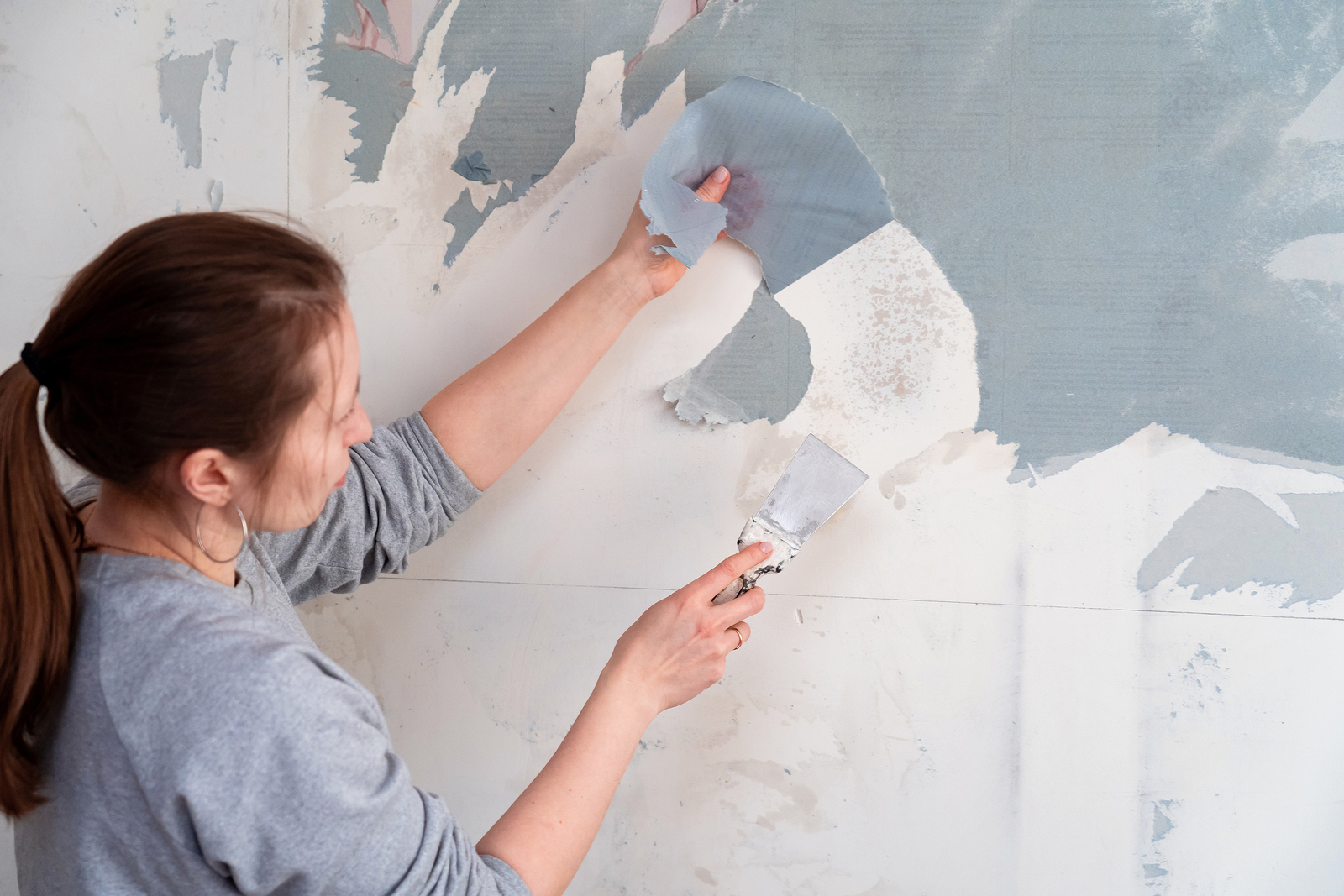If you think wallpaper is something only your grandmother would love, think again. “Wallpaper is back with a vengeance,” Brook Anderson with Bay Hill Design in Austin, TX tells Studio 512.
Celeste Randolph, a designer in Los Altos, CA concurs “Geometric prints in wallcoverings … are huge right now.”
Today’s wallpaper would blow gramma away. Carnegie Fabrics, for instance, offers a line of thermoplastic olefin wallcoverings or you could consider cellulose wallcoverings or artisan-crafted, handmade wallpaper, like these from Benjamin Moore.
Whatever you choose, to be successful with a DIY wallpaper hanging project requires careful and thorough preparation of the wall to which you hope to stick it.
“Wallpaper can’t cling to greasy, dirty walls, old wallpaper or paint,” claim the experts and WallpapersToGo.com. “That’s why we can’t emphasize enough how critical it is to have your walls properly prepared.”
If the wall is currently covered with wallpaper, you’ll need to remove it. Not a fun job, but we’ve rounded up some tips to make it easier.
The tools you’ll need to strip the old wallpaper
As mentioned above, understand that stripping wallpaper is not a fun job. And, it will take longer than you want it to. Don’t plan to get it all done in one day, even if you are working in a small room.
Then, head out to a hardware or home improvement store to pick up the supplies you’ll need. These include:
- Drop cloths
- A wallpaper scoring tool
- A wallpaper scraping tool
- Wallpaper removal solvent
- A spray bottle
Let’s get that wallpaper removed
Push the furniture into the center of the room and cover it with drop cloths. Then, lay a few of them down on the floors where you’ll be working. Finally, put some old towels or rags along the baseboards, lay drop cloths over them and tape it to the baseboards.
Examine your walls to determine if they are made of plaster or drywall. If your home was built more than 50 years ago, the walls are most likely plaster. Homes built since then typically offer drywall.
Not sure? Knock on the wall. If the sound is dull, it’s plaster, according to home improvement experts at Lowes.com. Drywall sounds hollow when you knock on it.
You’ll need to approach drywall with caution, being “careful not to damage the cardboard facing when using a wallpaper scraping tool,” say the pros at Lowes.
Next, pull off all the paper that comes off easily. Yes, you will be left with plenty of glue on the wall and patches of wallpaper. Score all the remaining wallpaper so that solvent can get through the paper and into the glue.
Beginning at the top of the wall (the area closest to the ceiling), spray a small area of wall with the wallpaper removal solvent (prepared according to package instructions). Allow the solvent to sit for a few minutes to ensure it has soaked in. Then, use the scraper to gently scrape the wallpaper and glue from the wall until it’s smooth.
Occasionally, especially with old wallpaper, the solution won’t be absorbed. Use coarse sandpaper to scuff up the area or use the suggested scoring tool. Soak the area again and allow it to sit for 30 minutes.
After all the glue and backing has been removed, clean and dry your walls before applying your new finishes.
A note about washable wallpaper
Washable wallpapers include a top layer, typically a plastic-like film. This is where the scoring tool comes in handy; use it to break holes in the wallpaper. Use the spray bottle, filled with water, and squirt the water into the holes you created.
Wait 10 minutes and then scrape the wallpaper from the wall.


